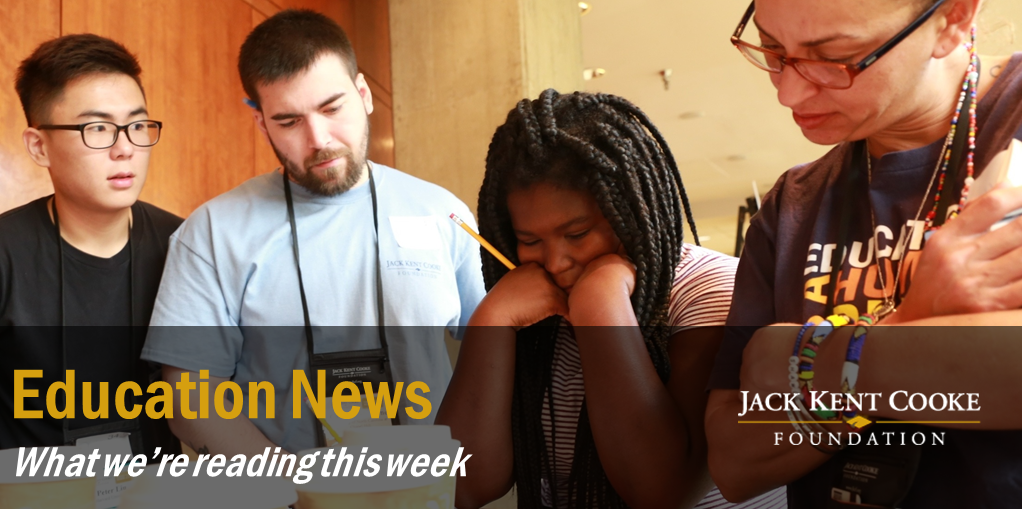September 18: Education News We're Reading This Week

September 18, 2015—Our weekly roundup of the biggest stories you might have missed!
Elementary & Secondary Education:
- More low-income students are identified as “gifted” when screening is done universally, rather than relying on teacher or parent referrals. Quartz shares the results of one district’s successful policy, which was unfortunately discontinued after only two years.
- Arne Duncan is on the road this week for the Department of Education‘s Ready for Success bus tour. One notable stop was Williamsfield, Illinois, where school district leaders have made it their mission to use open educational resources (OER). OER are free alternatives to traditional textbooks that can be found online and modified or updated to fit the focus of a particular class. Andrew Marcinek has been selected to lead the Office of EdTech’s OER initiative.
- Under a banner reading “Equity and Excellence,” New York Mayor Bill de Blasio announced ambitious goals for the city’s public schools. Chalkbeat noted that many educators admire the goals, but some question if new proposals — including computer science courses, reading and math benchmarks, and college advising — can be strategizied effectively.
Higher Education:
- The New York Times announces its updated index on “Top Colleges Doing the Most for Low-Income Students,” with six University of California campuses taking seven of the top spots.
- Although public universities are often seen as rungs on the ladder of social mobility, Washington Monthly determines that many institutions do not enroll statiscally expected Pell grant recipients even when controlled for admissions selectivity. University officials who meet their expected Pell enrollment rates state that active outreach to low-income students is key.
- WAMU‘s “Lower Income, Higher Ed” reports on the hurdles encountered by many low-income and first-generation college students, and details some of the new solutions universities and community-based organizations are using to coordinate support.
- The Michael & Susan Dell Foundation writes about preventing low-income students from “fall falter,” in which unexpected costs and child care become obstacles to the transition from high school to college. While identifying support and advising resources is difficult for students during the summer, The Hechinger Report says texting reminders is an effective method to help keep rising freshman on track.
- The Department of Education made two long-awaited announcements:
- Beginning October 2016, students will be able to use prior-prior year income to fill out the FAFSA. NASFAA’s 1-minute video explains how this change may empower high school students applying to colleges.
- Collegebound students (and policy wonks) can now access the College Scorecard for data on average annual cost, graduation rates, and alum salary 10 years after attending a specific college or university. An analysis highlighted in The Atlantic used the material to discover that over 25% of the nation’s wealthiest universities leave low-income students with an average of over $20,000 in debt.
Cooke Foundation Highlights:
- Cooke Scholar and ScholarCHIPS founder Yasmine Arrington spoke to the Health and Wellness Show about how her experiences with the Cooke Foundation from middle school through college have helped support her ambitions.
- Dickinson College’s Postscript interview with Lead Educational Advisor Patricia Thomas provides a behind-the-scenes perspective on our Young Scholars Program.
- The Cooke College Scholarship application opened on Monday! We’re looking for talented high school seniors with financial need to apply! Cooke Scholars receive up to $40,000 for each year – plus college planning support, ongoing advising, and the opportunities for study abroad, internships, and eligibility for a $50,000 per year Cooke Graduate Scholarship. Apply now through November 3, 2015: jkcf.org/college